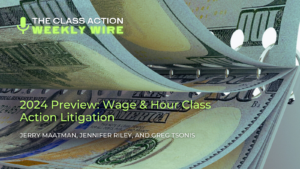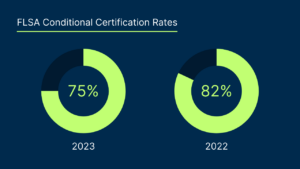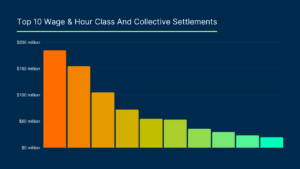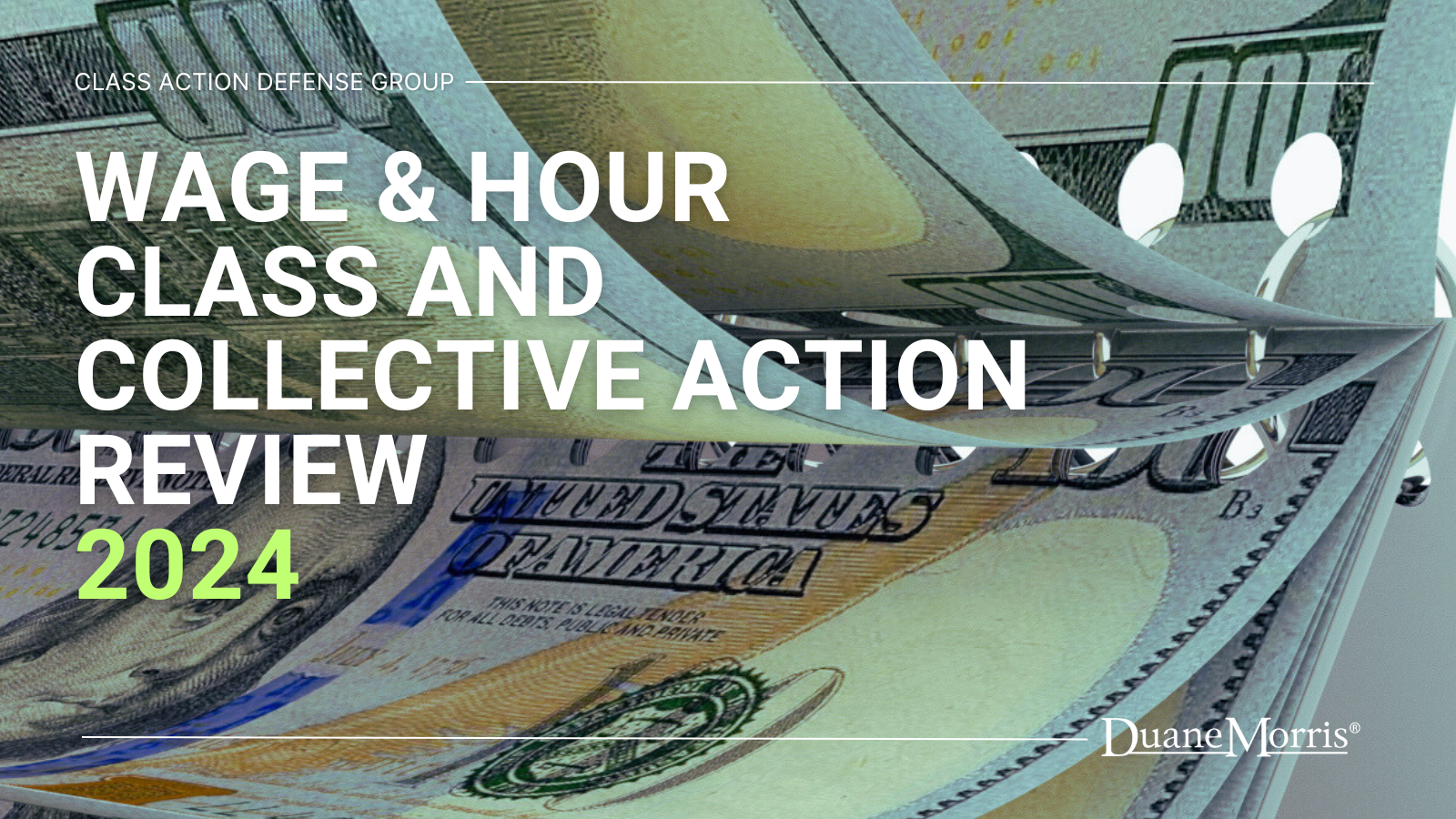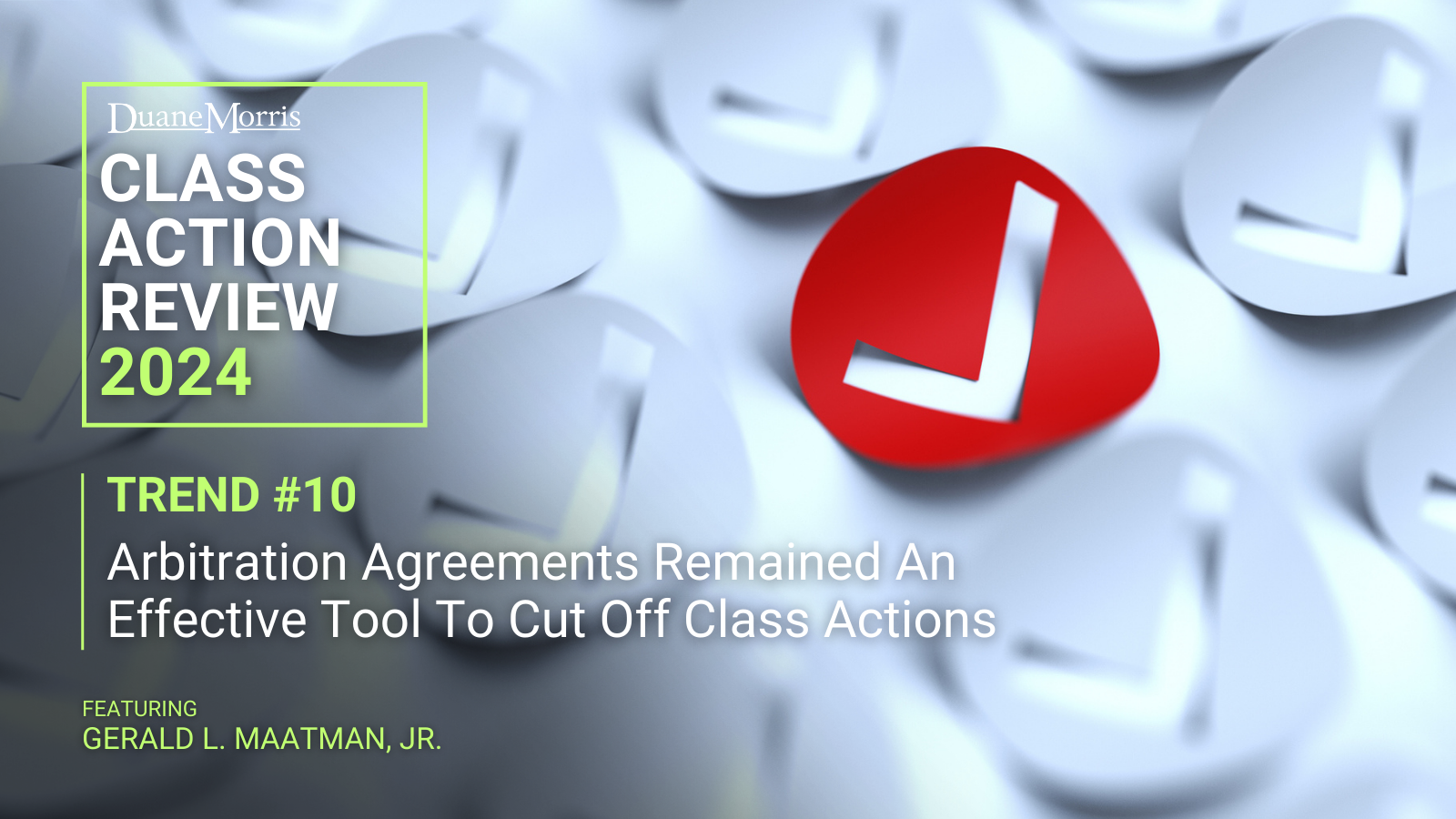 By Gerald L. Maatman, Jr., Derek S. Franklin, and George J. Schaller
By Gerald L. Maatman, Jr., Derek S. Franklin, and George J. Schaller
Duane Morris Takeaways: In Coatney, et al. v. Ancestry.com DNA, LLC, No. 22-2813, 2024 U.S. App. LEXIS 3584 (7th Cir. Feb. 15, 2024), the Seventh Circuit affirmed the district court’s denial of Ancestry’s motion to compel arbitration on the grounds that minors were not parties to arbitration agreements entered by their guardians and the Defendant. Circuit Judge Michael B. Brennan wrote the opinion of the Seventh Circuit panel.
For companies facing class actions under the Illinois Genetic Information Privacy Act (“GIPA”) involving alleged disclosure of confidential genetic information, this ruling is instructive on dispute resolution provisions and how drafting those provisions can dictate who is bound to arbitrate claims.
Case Background
Defendant, Ancestry.com DNA, LLC (“Ancestry”) is a genealogy and consumer genomics company that allows users to create accounts to purchase DNA test kits, which Ancestry collects consumer saliva samples. Id. at 2. Ancestry takes these samples, analyzes the genetic information, and then returns genealogical and health information to the purchaser through its website. Id. In 2020, Blackstone, Inc. acquired Ancestry.
Only adults may purchase or activate a DNA test kit, and purchasers must agree to Ancestry’s terms and conditions before purchasing and activating a test kit. Id. However, minors thirteen to eighteen years old may still use Ancestry’s DNA service as long as a parent or legal guardian purchases and activates the test kit, and sends in the minor’s saliva sample using an account managed by the child’s parent or guardian. Id.
Between 2016 and 2019, guardians purchased and activated test kits on behalf of the Plaintiffs, who were all minors at the time. Id. at 2-3. Each guardian agreed to consent terms (“Terms”) concerning the use of each minor’s DNA test kit. Id. at 3. The terms contained a dispute resolution provision binding the parties to arbitration and waiving any class actions. Id. However, the Terms did not require Plaintiffs to read them. Plaintiffs alleged that they did not, and that they also did not create the Ancestry accounts. Id. at 4.
Plaintiffs, on behalf of themselves and a putative class of similar members, filed suit against Ancestry in Illinois federal court alleging violations of the Illinois GIPA. Id. Plaintiffs alleged that, as part of Blackstone’s 2020 acquisition of Ancestry, Ancestry disclosed genetic test results and personal identifying information to Blackstone without obtaining written authorization. Id.
Ancestry responded by moving to compel arbitration under the Terms dispute resolution provisions. Id. at 5. The district court denied Ancestry’s motion. First, the district court found that Plaintiffs did not assent to Ancestry’s Terms through their guardians’ accounts or their guardians’ execution of consent forms on Plaintiffs’ behalf. Id. Second, the district court determined equitable principles such as the theory of direct benefits estoppel did not bind Plaintiffs, as there were no allegations that Plaintiffs accessed their guardians’ Ancestry accounts or their DNA test results. Id.
As a result, Ancestry filed an interlocutory appeal with the Seventh Circuit for review of the district court’s decision. Id.
The Seventh Circuit’s Decision
The Seventh Circuit affirmed the district court’s decision. On appeal, Ancestry urged the Seventh Circuit to reverse the district court’s denial of its motion to compel on three grounds, including: (1) Plaintiffs’ guardians assented to the Terms on their behalf; (2) Plaintiffs were “closely related” parties to their guardians (or even third-party beneficiaries), foreseeably bound by the Terms; or (3) as direct beneficiaries of the Terms, Plaintiffs were estopped from avoiding them. Id. at 6.
At the outset, the Seventh Circuit reasoned that it is a “bedrock principle” that “an arbitration agreement generally cannot bind a non-signatory.” Id. at 6-7. The Seventh Circuit also explained that “whether an arbitration agreement is enforceable against a non-party is a question governed by ‘traditional principles of state law.’” Id. at 7.
First, on Ancestry’s argument that Plaintiffs’ guardians assented to the Terms on Plaintiffs’ behalf, the Seventh Circuit determined that the Terms’ plain and ordinary meaning was unambiguous and found that the only parties to the agreement are the signatory and Ancestry. Id. Further, the Seventh Circuit noted that Terms stated they “are personal” to the signatory, who “may not … assign or transfer any … rights and obligations,” established by them. Id. The Seventh Circuit also found that the Terms contained no language that the guardians “agreed to them ‘on behalf of their children.” Id. at 9.
Second, the Seventh Circuit rejected Ancestry’s argument that Plaintiffs may be contractually bound to the Terms “either as closely related parties or third-party beneficiaries.” Id. at 11. The Seventh Circuit opined that “[t]he company mounts these arguments from shaky legal ground, as Illinois ‘recognize[s] a strong presumption against conferring contractual benefits on non-contracting third parties.’” Id. With respect to Ancestry’s argument that Plaintiffs were bound by the Terms as “closely related” parties to their guardians who signed them, the Seventh Circuit determined that a special relationship in fact and in law between the Plaintiffs and their guardians as that relationship “does not join their identities, as can be the case with parent and subsidiary corporations.” Id. at 12-14. The Seventh Circuit similarly concluded that the Terms did not cover Plaintiffs as third-party beneficiaries since the express provisions of Ancestry’s Terms excluded third-party beneficiaries. Id. at 12. While the Seventh Circuit found that the Terms that contemplated consent to Ancestry’s processing and analysis of a child’s DNA, no aspect of that consent established that the Terms were for “plaintiffs direct benefit.” Id. at 16. In addition, the Terms’ arbitration provision did “not contain language capturing the plaintiffs.” Id. at 17. Instead, the provisions’ language indicated that the “signatories intended to bind themselves, but not others to arbitration.” Id.
Finally, the Seventh Circuit rejected Ancestry’s argument that “[a]s direct beneficiaries of their guardians’ agreement to the Terms, Plaintiffs are estopped from avoid its arbitration provision.” Id. at 18. Noting the absence of legal authority supporting Ancestry’s argument, the Seventh Circuit concluded “that Illinois would not embrace direct benefits estoppel to bind plaintiffs here.” Id. at 19. The Seventh Circuit also based its conclusion on the absence of any record allegation that “plaintiffs have accessed or used the analyses completed by Ancestry as contemplated by the Terms” coupled with Illinois’ law “disfavoring the binding of non-signatories to arbitration.” Id. at 25.
Implications For Companies
Companies that are confronted with GIPA class action litigation involving dispute resolution provisions should note the Seventh Circuit’s emphasis in Coatney on the lack of allegations that Plaintiffs read the contractual terms at issue, along with the absence of contractual language capturing or identifying Plaintiffs.
Further, from a practical standpoint, companies should carefully evaluate the language expressed in terms and conditions agreements, including those drafted in dispute resolution provisions, as courts are not inclined to assume non-signatories are bound to agreements when not expressly included.

